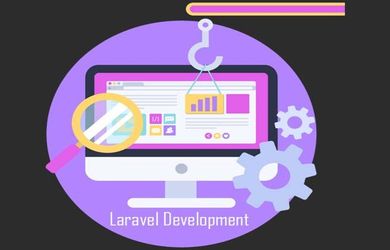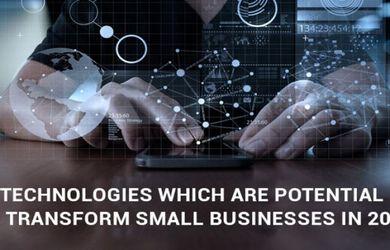
How to buy and sell NFTs for profit - Msginfosys
Non Fungible tokens (also known as NFTs are a step forward in the cryptocurrency industry and are a significant step in the modernization of finance and other sectors.
It is fungible since there is no difference between one dollar and another. Stocks of the same type within the same firm and commodities with the same qualities are usually interchangeable. However, NFTs, as they are non-fungible, represent exclusive digital and physical assets such as an artwork, a piece of music, or an in-game item that other investments cannot substitute. Every non-fungible token is stored on the blockchain and contains metadata, an identification number that makes it difficult for NFTs to exchange for or equivalent to one another.
Through digital representations of particular items and the advantages of smart contracts, NFTs eliminate intermediaries and directly link content creators with the public, providing authentic certificates generated by blockchain in digital assets. Thus, the concept of NFTs could alter the art and crypto landscape.
What else makes non-fungible tokens so attractive to collectors and artists? Where and how to buy NFTs? How do you sell an NFT, and what method of selling is the best one to select?
Let's sketch out the answers to these questions in this article.
What are NFTs?
They are "one-of-a-kind" cryptographic digital assets that are real-world objects and digital objects such as music, art, land, collectibles from games, videos, images, and other artistic products. In the digital realm, they can be purchased and sold just like every other item of the property but do not have an actual shape that is their own. They are unique; they are limited in supply and precious due to their limited supply. They cannot be duplicated and can easily be verified. They can be considered evidence of authenticity and a certificate of ownership of virtual or physical assets recorded in the blockchain.
The potential uses for NFTs include some of the most prominent ones such as digital art, collectors' items within music, gaming, academics, sports, fashion as well as financial decentralization (Defi) tokenization of objects in the real world, the ownership of domain names, certificates and licenses Patents, documentation, and many more. In addition, NFTs could be used to monitor the metadata of events, enhance ticketing for events and even alter the real estate market.
While NFTs have existed since the beginning of 2010 (the prototypes for NFTs were experiments created by the Bitcoin network in 2012 and were dubbed"colored" currency), NFTs have recently gained popularity within the crypto-community. Thus, NFTs are increasingly attractive for selling and buying digital goods. NFTs, give creators and artists the chance to earn money from their work and market directly to consumers. NFTs with complete independence from the creative industry's intermediaries represented by auction houses, galleries, and record labels.
Buying NFTs
It is possible that purchasing Portable Network Graphics (PNG) (also known as graphics interchange format (GIF) files for millions or thousands of dollars is irrational. Yet, many people are willing to pay vast amounts for things they can easily access or download from the internet at no cost. Why?
NFTs directly connect financial and social capital, the sense of building the relationships between individuals and proving community membership. The data stored on the blockchain comes with the built-in security of authentication. It lets content creators electronically "autograph" their NFTs and allows viewers to connect with artists, buy their favorite artwork, and be part of the specific community. As NFTs are referred to as "Investment-as-a-Status," buying them is considered one of the most efficient paths to maximizing social capital by forming more links and bonds in the crypto space.
For collectors who purchase an NFT, the item is exclusive and rare -- the most important criteria for every true collector regardless of whether the image or piece of music was shared on the internet often.
It's worth noting that collectors aren't buying the original content since they likely won't have the copyright to it. Because of technology, the creator owns the copyright, and most NFT platforms offer the possibility to claim profits in the future if the same object is sold. When buying NFTs, collectors purchase tokens that link their names to the work of the creator on the blockchain. That is the most important thing.
Therefore, purchasing NFTs permits collectors to own the original items recorded on the blockchain. This is used as evidence of ownership.
Where to buy NFTs?
Different online marketplaces in the crypto market offer the option of buying and selling non-fungible tokens. They do not all operate precisely, offer the same features, and provide the same types of NFTs. However, most platforms are built on Ethereum. Ethereum blockchain. Others that aren't Ethereum-based NFT services are part of blockchains such as Cosmos, Polkadot, or orDinance Smart Chain to mention only a handful.
Other distinctions among NFT marketplaces can be attributed to several factors that determine whether they support the required NFT specifications and formats for files, NFT platform accessibility, an amount to make (or mint) an NFT, and other factors that might be more important to creators of content than to buyers.
While each NFT marketplace operates differently, they can all offer an array of NFTs to purchase. In addition, experienced buyers select the right marketplace based on the kind of non-fungible token they wish to purchase.
If you're unsure of how to purchase NFTs, then here are the marketplaces you can utilize to purchase and sell NFTs
OpenSea
OpenSea is a fantastic NFT marketplace that Ethereum powers. Additionally, users can make use of cryptocurrency to purchase non-fungible tokens. It provides a variety of collectibles ranging from artwork and video games. However, to utilize this platform, you need to purchase a cryptocurrency wallet such as Metamask. OpenSea has a wide range of wallets for blockchain, including Metamask, Trust, Coinbase, Argent, etc. This is among the most popular platforms on which you can purchase NFTs.
SuperRare
SuperRare is another platform to buy NFTs. The items are unique; users can sell and purchase all tokens on their platforms. Additionally, the platform is based on an Ethereum network, and you will need to purchase Ether to be able to purchase any product from the site.
CryptoPunks
CryptoPunks is among the most popular players in the present. It's pretty different than the other NFT marketplaces. It's predominantly 24x24-pixel images. The images are created automatically by using algorithms. Most of them are males and females who look like punks; however, there are some rarer ones like zombie punks and Alien punks. All the punks have their portfolios, traits, ownership status, and whether they are available for sale.
It's a bit like CryptoKitties, where each item is distinct. Similar to CryptoKitties, every punk is distinct. In this market, purchasing punks, selling them, or auctioning them at a higher cost is possible.
Rarible
Rarible is like OpenSea and plays a significant part in the token-based digital transformation of the blockchain. You can create, buy, or sell auction artworks on the marketplace. You must upload your digital files, create your NFT through this platform, and then auction it. Anyone who wants to purchase these digital images can make bids on them, and the bidder with the highest price is the one who owns the image. You can create more than one NFT for one image for sale reasons and then sell it several times. In addition, you may even get a share of sales that are resold.
So rare
So rare is designed explicitly for soccer cards. It allows for the purchase and sale of limited edition football cards that are digital. There are currently over 125 clubs listed in Sorare's marketplace, and they're growing daily. So rare is the best NFT marketplace for you if you're an avid soccer player since you can purchase your favorite soccer team's soccer cards.
Now that you know where to purchase NFTs let's get started on your account.
Buy Your NFT
This is the final step you must take to purchase NFT. When you're done, funding your account and wallet and then buying the item is relatively easy. A majority of NFT marketplaces offer an auction model where you can submit your bid and then wait for a set period to find out whether you won the piece or not. The auction may be ongoing for days, and if you genuinely want to purchase a piece, you'll need to beat the most bidder.
To purchase NFTs through OpenSea, the user needs to search the marketplace and discover an NFT they would like to purchase. Then, examine the history of its prices and confirm the details to stay clear of any scams or red flags.
For NFTs with a fixed cost or a fixed amount, the "Buy Now'' option is utilized to examine the purchase before going into the page for checkout and then clicking "Checkout".
After reviewing the relevant transaction cost in the cryptocurrency wallet, the buyer can confirm the purchase and then view the NFT in the "In-Wallet" section.
In the case of NFTs that are part of an auction with a time limit, the "Make Offer" option can be used to make an offer (which should be at least 5 percent more than the bid currently being offered) in the currency of the bidder's preference. The expiration date may also be specified for the bid.
Once you've learned how to purchase NFTs, now is the time to learn how to make and sell NFTs on these platforms.
How to sell NFTs you bought
Selling collected non-fungible tokens aren't more complex than the process of selling NFTs which are newly minted.
Collectors can quickly sell their NFTs in an auction market if they want to. The phrase "secondary market" encompasses all subsequent sales of the work; in contrast, "primary market" refers to the initial selling of an NFT. To sell NFTs, collectors require some things that are likely already in their possession in their accounts: an account with an NFT marketplace of their choice, a cryptocurrency wallet connected to it, and a certain amount of cryptocurrency that can be used on that marketplace.
The significant difference here is that collectors won't receive royalties when the NFTs in their collection is sold. Royalties in the form of a proportion of future sales will be paid directly to the wallets of the original creators of the NFTs.
Therefore, content creators are forever bound by copyright over their work in the NFTs, whereas collectors receive tokens that are non-fungible in their collections for a limited time. Collectors who have non-fungible tokens, like collectors from other traditional markets, have fundamental rights of ownership like the right of possession of, sell or donate the items they've purchased and the rights removed when the item is sold—the specific NFT.
To sell NFTs, collectors must access their profiles on these NFT platforms and choose the NFTs they would like to sell. After selecting the saleable NFT, they need to locate an option to click on the "sell" or "list for sale" button. When they click on that button, it will bring them to a pricing page, which will allow them to choose the terms of the sale. In the next step, they'll have to decide on an amount for the NFTs or select to begin an auction. If collectors wish to launch an auction, they should inquire about what kind of auction will be supported by the chosen NFT platform. It is usually one of the following: an English auction, a timed auction, or one that is a Dutch auction.
NFTs revival continues to grow despite the volatile and insecure characteristics of the market for cryptocurrency and the substantial doubt about the value of non-fungible tokens. While creators of content and collectors often don't make money from selling NFTs, purchasing tokens that are not fungible is an excellent way to help musicians, artists, or designers. Creative collectors who are keen on these digital assets






